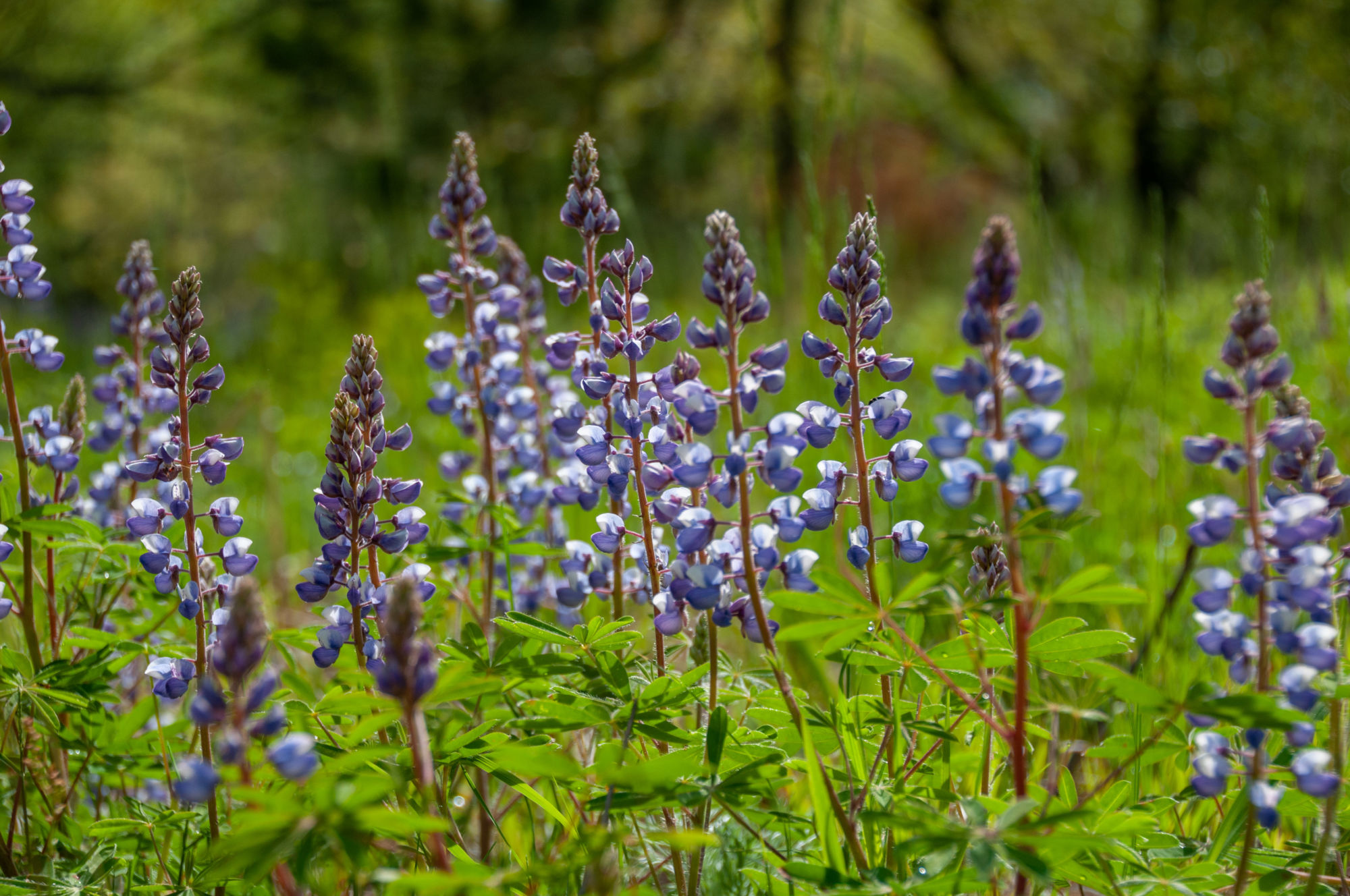
Cirsium pitcheri: A thistle at risk
The following is a guest post from Maisie Wiler (pictured above), a student at Grand Valley State University studying Natural Resources Management and Writing and a Land Conservancy of West Michigan volunteer. She is an avid hiker, cyclist, gardener, and hobby photographer.
This past summer, I interned at Sleeping Bear Dunes National Lakeshore as part of the Scientists in Parks program. I worked closely with the Pitcher’s thistle (Cirsium pitcheri), a threatened thistle native to the coastal freshwater dunes of the Great Lakes. Its classification, “threatened,” means that it is likely to become endangered in the future. I began a multi-year project that seeks to map populations of the thistle across the Sleeping Bear Dunes complex, recording density and distribution to understand the factors influencing the plant’s population dynamics.
The Pitcher’s thistle holds a special place in my heart. It is adapted to the turbulent, ever-changing conditions of coastal dune systems; as such, it is visually distinct from other thistles. C. pitcheri is covered in soft, white “hairs,” which aside from giving the plant its silvery appearance, prevent excess water loss (evapotranspiration). Its leaves are slender and deeply lobed/dissected, an adaptation which reduces leaf surface area and therefore prevents evapotranspiration. It has a long, hardy taproot that can grow taller than a person—and the plant can withstand erosion below its root caudex (where the stem and root conjoin). It is not uncommon to see Pitcher’s thistle plants with several inches of the taproot exposed above the soil. Additionally, the thistle is rather mild compared to others in its genus. C. pitcheri has an entirely spineless stem. Its spines are only found on the tips of the leaf lobes and on the phyllaries (the triangular, highly-modified leaves (bracts) surrounding the flower. While surveying, I often handled the Pitcher’s thistle (gently, of course!), and rarely received more than a little poke.
What I regard as its crowning glory, however, are its beautiful, pale flowers. Most other thistles in the genus Cirsium have fuchsia pink, magenta, or purple flowers. C. pitcheri, meanwhile, has flowers that are most often cream-colored with a touch of pink or lavender. Very rarely does C. pitcheri have brilliant magenta blooms. Per Michigan Flora Online, this unusual coloration seems to be local, occurring at only one site in Mackinac County. This summer, I observed exactly one Pitcher’s thistle plant that displayed similar, deep magenta coloration.

C. pitcheri flower. Image: Maisie Wiler
The Land Conservancy of West Michigan stewards a property containing a population of Pitcher’s thistle. Flower Creek Dunes Nature Preserve, located in Muskegon County, maintains an undeveloped and dynamic foredune habitat prime for C. pitcheri, which will eventually disappear from habitats stabilized by late-successional species.
Given all that has been said about shoreline erosion, you may wonder why the LCWM seeks to preserve the Flower Creek Dunes in a state of dynamism. While true that much of the (developed) Great Lakes shorelines suffer from erosion due to shoreline development and human disturbance, many dune-adapted species rely upon the natural disturbances which characterize coastal dune ecosystems; without shifting sands that maintain a majority open foredune habitat, the Pitcher’s thistle struggles to both germinate and to survive.
Due, therefore, to its narrow habitat requirements, the Pitcher’s thistle is at particular risk of being displaced by invasive species. My project at Sleeping Bear Dunes also mapped the density and distribution of Spotted knapweed (Centaurea maculosa) and Baby’s breath (Gypsophila paniculata), both of which are monoculture-forming plants that quicken the successional process and “close” the open, shifting foredune habitat. Spotted knapweed is an allelopathic plant, which releases a chemical from its roots that inhibits the growth of other plants; it is considered a noxious weed in the State of Michigan. Baby’s breath, meanwhile, flowers in dense panicles that detach and tumble across the dunes, freely self-seeding; additionally, its long and thick taproot makes it incredibly difficult to remove.
Managing any rare, threatened, or endangered natural resource is a complex process that requires management of its habitat and the threats against it. Management of the Pitcher’s thistle, therefore, requires the allocation of open, undeveloped tracts of freshwater dunes. In setting aside the Flower Creek Dunes as a Nature Preserve, the Land Conservancy of West Michigan has already made headway to ensure the survival of the threatened Pitcher’s thistle. But still, treatment of invasive species and mindful recreation remain integral to the health of the thistle and its habitat. So, what can you do?
Always be mindful of where you walk. Please stay on maintained trails and wooden walkways, where present. Also, before traveling to Flower Creek Dunes Nature Preserve, learn how to identify the Pitcher’s thistle and its life stages. C. pitcheri seedlings are miniscule and easily trampled! Be on the lookout for plants as small as these… They will someday be mighty thistles!

C. pitcheri seedlings. Image: Maisie Wiler
Additionally, be careful not to walk on dune ridges. While you might get a lovely view from the top of a ridgeline, frequent traffic can damage the root and runner networks woven by American beach-grass (Ammophila breviligulata), and, consequently, cause erosion. It’s best to stay to trails and to interdunal troughs.
Lastly, to limit the spread of invasive species, do the invasive species brush-off. Seeds and other vegetatively reproducing plant parts can stick to your clothes, shoes, and even hair! When arriving at and leaving any natural recreation area, take care to remove debris in the treads of your shoes, caught in the laces of your shoes, sticking to your socks, caught on your pant legs, and even stuck to your hair. (Some plants, like sweet-cicely, can and will hitch a ride on leg hair!) Though it seems like a small gesture, it is important to take a moment to stop invasive species before they invade.
Although the Pitcher’s thistle has now gone to seed, I encourage you to visit Flower Creek Dunes Nature Preserve for a glimpse of this beautiful, unique, rare plant, whose striking silvery-blue foliage will persist well into fall. And if, while you take in the spectacle, you feel moved to aid in preservation efforts, I will direct you to the “Get Involved” page above. The Land Conservancy of West Michigan is actively working to preserve, restore, and reconnect lands that support all manner of Great Lakes biodiversity—but their work would not be possible without your support.




